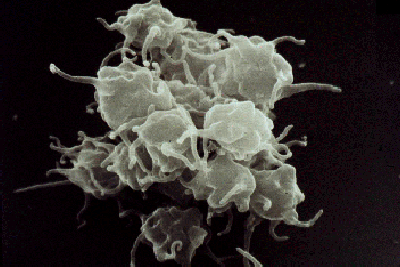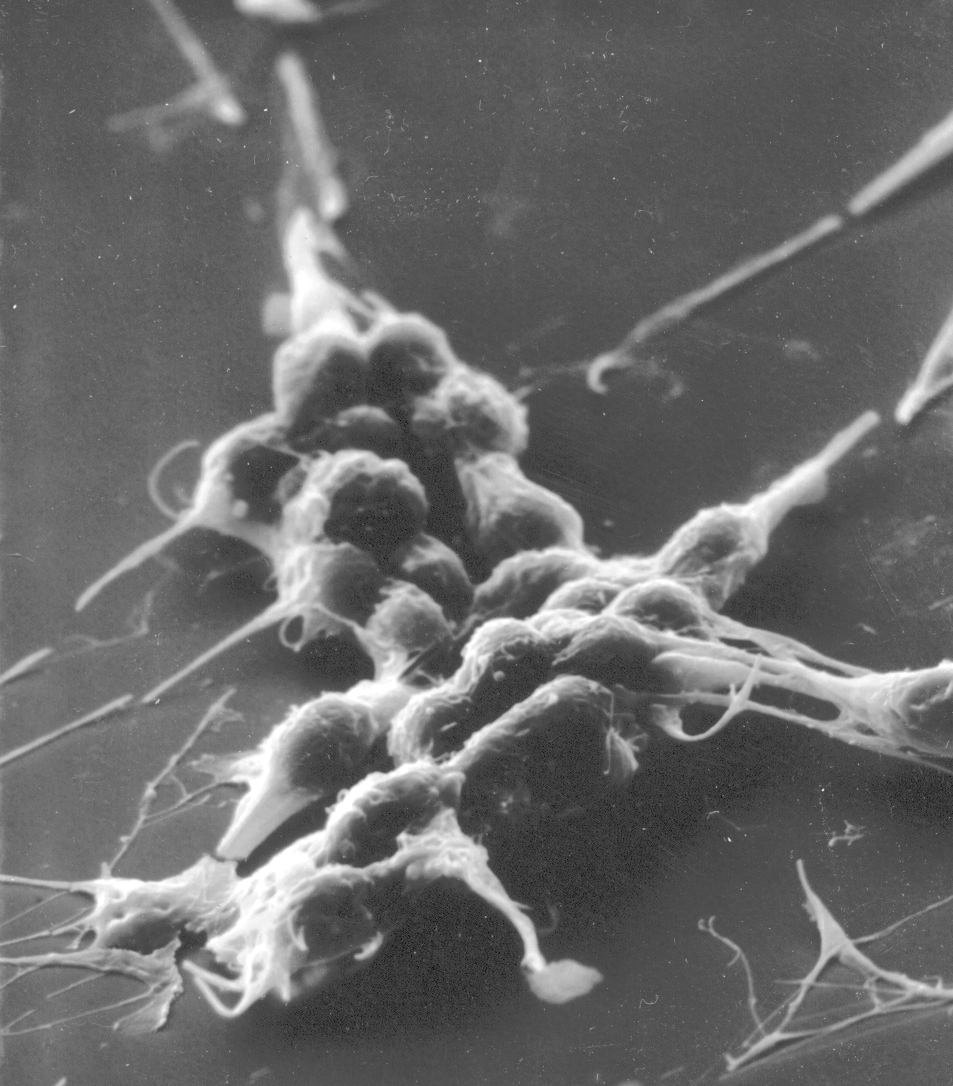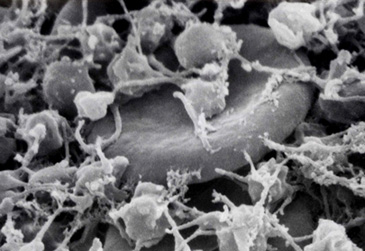Pregnancy-Related Thrombocytopenia
Some, but not all, reports on platelet counts during pregnancy describe lower than normal platelet counts as pregnancy progresses, with approximately 5% of women having platelet counts less than 150,000/µL (the lower limit of the normal platelet counts in health subjects) at the time of delivery. In these reports, most women had only slightly low platelet countsl; few women had platelet counts less than 100,000/µL.
When low platelet counts occur during an otherwise uncomplicated pregnancy in a healthy women, it is often described as "gestational thrombocytopenia." There is no known cause for gestational thrombocytopenia, and it is often implied that it may be an abnormal (pathologic) occurrence, not simply a normal (physiologic) occurrence.
We are currently working on a project to define the platelet count changes during pregnancy. Using the electronic medical record system of the University of Oklahoma Medical Center, we are analyzing the platelet counts on approximately 10,000 healthy women who delivered following an uncomplicated pregnancy, 2011-2014. Our hypothesis is that the platelet counts of all women shift down slightly during uncomplicated pregnancies. While the platelet counts of most women remain in the normal range (150,000/µL - 350,000/µL), some will be below this range. If we document that platelet counts are lower in pregnant women compared to non-pregnant women, we will consider this to be the new "normal" range of platelet counts during pregnancy.
We are also investigating potential mechanisms for this shift of platelet counts to a lower range. An obvious mechanism is that the plasma volume increases during pregnancy. This is the basis for lower hemoglobin concentrations during pregnancy; the red blood cells are simply diluted. Similarly, the platelets would may be diluted. Another hypothesis is that the placenta may accumulate platelets, removing them from the circulation. This would be similar to the role of the spleen in all normal subjects. It has been estimated that in all of us, the spleen "pools" about one-third of circulating platelets in its sinusoids which have a very slow circulation. There is a report that the spleen size increases during pregnancy and this may partially account for the decreased number of circulating platelets. Another potential mechanism is that, similar to the spleen, the placenta may also "pool" platelets. This could occur in the intervillous spaces of the placenta, which have a very slow circulation to allow the exchange of oxygen and nutrients with the fetal blood.
This project is part of the PhD Epidemiology dissertation of Jessica Reese. We anticipate that she will complete this project in 2016.
James N. George, M.D.
Professor of Medicine
Hematology-Oncology Section, Department of Medicine
Department of Biostatistics & Epidemiology, College of Public Health
University of Oklahoma Health Sciences Center
IMPORTANT!
The information included in this website is for educational purposes only. The designers and operators of this site take no responsibility for the things you may do with this information. For advice on your unique medical condition, please consult your health care professional. By going further into this website you acknowledge that you have read and understood this disclaimer.



